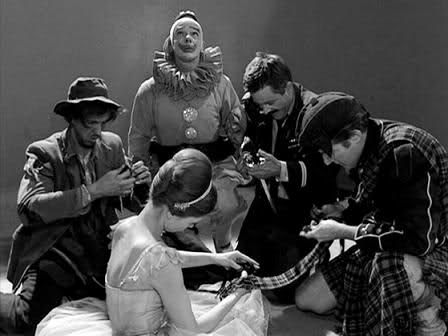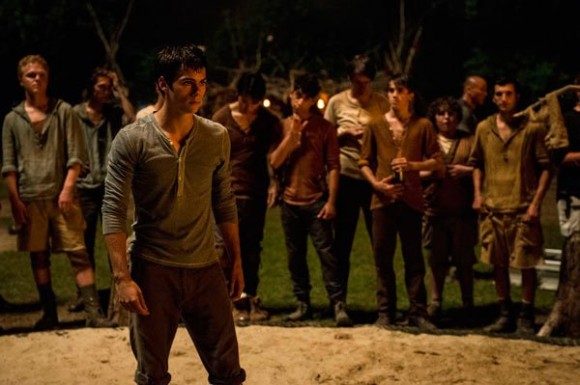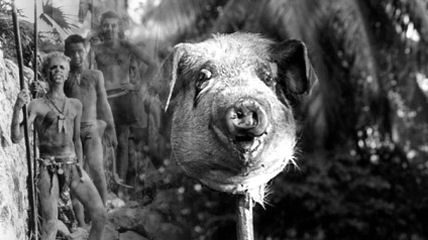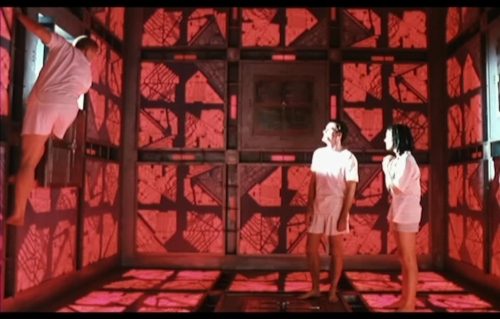Welcome to Revisionist History, where we, unencumbered by the demands of studios and profit margins, try to imagine different and better versions of the movies that are out there. This is not a review; it is a full-spoiler discussion of what works and what doesn’t, particularly from a story/concept standpoint (i.e. unless there’s a particular tic that is distracting, it’s hard to account for a poor acting performance or other failure in execution alone other than to say, “Do better.” Which isn’t very interesting or helpful to anyone.)
This week, we’re revising The Maze Runner.
With a $30 million opening weekend and sequel The Scorch Trials due September 18, 2015, this latest young adult franchise can legitimately be called a thing that people went to see. I personally did not care for the film, finding it “not offensively bad, but it never becomes more than boring either.”
For those unfamiliar with The Maze Runner, a group of young adult males with amnesia (other than their first name) find themselves in an isolated, blocked-in glade with the only possible escape being through a nigh-unsolvable maze that is navigated by a group called “runners” (hence the film’s title). After everyone else spent years making absolutely no headway, Chosen One protagonist Thomas is able to figure everything out in a span of time that might be as little as a week.
Now we can get into real spoilers. After around 95 minutes of this 113 minute movie, Thomas has most of the Glade on his side and they finally attempt an escape. After losing some red shirts, the runners make it to their captors’ headquarters, and it looks like the offices in The Cabin in the Woods following the System Purge.
Their kidnapper is an organization named WCKD – it stands for The World Catastrophe Killzone Department, which is even sillier – which Thomas and sole girl Teresa even worked (interned?) for at some point. In the offices, the kids watch a video featuring WCKD VP of Plot Contrivances Ava Paige (legitimate actress Patricia Clarkson), who explains that there was a global catastrophe and that the kids were being tested to find a cure or to be humanity’s last hope or something along those lines. During the video, a group of black-clad soldiers mow down everyone at WCKD HQ. After the video, these special forces rush back in and take the kids to “safety.” As they helicopter across a post-apocalyptic landscape, we cut back to…
Paige and the rest of WCKD still alive! Paige says that more people survived from the maze running than she expected, but it’s good because it’ll just make Phase 2 more exciting. (Buy tickets for The Scorch Trials now, everyone! )
In honor of the film’s maze-based concept, I will present two different paths for this revisionist history. Maybe they’d lead to success, or maybe they’d end up crashing into a wall.
Path #1: BT- Before Thomas


The Five Characters in Search of an Exit in The Twilight Zone‘s “Five Characters in Search of an Exit”
In my review, I referenced The Twilight Zone‘s classic episode “Five Characters in Search of an Exit.” (It’s available on Netflix Instant- Season 3, Episode 14, and I highly recommend it.) In it, five characters are trapped in a circular room with seemingly no escape. They have no memory of who they are or where they came from. Their only identity comes from the clothes they are wearing (e.g. ballerina, military officer, clown). We then combine that exercise in existentialism with a Lord of the Flies scenario. A bunch of young adult males having to form a society without any knowledge of themselves or their pasts or Robert’s Rules of Order? I’m sure that won’t have any hiccups.
Disappointingly, in the actual movie all of this material is already over by the time that Thomas arrives on the scene. The society is calm and peaceful. Everyone’s personality is on a pretty much even keel – complacent and easy going. The society has been formed, people are relatively settled, and they’ve accepted this life for years.
But getting to the rut is where the more interesting story lies. Upon first arrival, the Glades-ians would be operating on nothing but hormones and fear. There’s a significant wealth of material in seeing how drastically different base personalities would attempt to build a world without any outside influence. The different systems of government they’d try out, the creation of a hierarchy, the upheavals, the growth of complacency – it’s what we wanted but didn’t get from Lost. In other hands, it could even possibly be a spiritual counterpart to Alex Garland’s terrific novel The Beach (turned into a mediocre film by Danny Boyle).
Down this road, the maze becomes almost secondary, if not tertiary, to the movie’s main focus. Yet the maze could still benefit. By the time the movie begins, everyone understands the maze; it’s even been almost entirely mapped out by the runners. But in a world where nobody knows anything about the maze, it becomes an even greater threat. What are the sounds coming from inside? What mystery does every turn hold? What happens when you get trapped inside? We get a lot of this information through exposition, but experiencing it for the first time from the Glades-ians’ perspective AS they’re fighting against one another would offer some solid suspense.
Admittedly, this path defeats the entire purpose of the movie and the franchise (and I am certainly not saying it should be given a prequel). Instead of a basic action-adventure, it is transformed into a paranoia-fueled character drama that delves into philosophical issues of what being human means at its core, how one develops a society from scratch, and what are the characteristics that make a powerful leader. Yet a truly legitimate and fascinating story can be built around the antagonism between homebody Gally, who believes that “the maze has us now,” and Alby, who is seeking an exit. The inevitable tribal war between both sides of humans can provide greater emotional resonance than man vs. maze and monster.
A situation like this doesn’t even need a Thomas character. (Or maybe the all-knowing Thomas can appear only to be slaughtered upon his arrival in some bit of dark comedy.) Instead of some messianic figure that can solve everyone’s problems, it allows the characters not endowed with the author’s blessing of greatness to stand on their own and become three-dimensional creations. They must come up with their own solutions to survive both the monsters of the WCKD-developed Glade and the more realistic struggles between one another.
Of course, with this situation, escape would be practically impossible at least partially because it would bloat the running time to an ungodly length, but the focus would be on more interesting angles of the story, so who cares? The movie can end with the good ambiguity of the boys accepting that this is the new normal (as opposed to the bad ambiguity of, “We’re not giving you any answers, stay tuned for Part 2.”) and still feel satisfying. Or maybe they can eventually be rescued by oh, let’s say, Moe.
Path #2: AT- After Thomas
Then again… In Path 1, I apply some of the more cerebral ideas from a few of my favorite works and in doing so might be trying to fit a square theme into a round genre. My second path is a bit closer to The Maze Runner itself and what it tried to accomplish – except, hopefully, better.
Instead of succumbing to wide-eyed franchise dreams, The Maze Runner could have been a decent first part of a movie, with the rest of the film showing us subsequent challenges. Admittedly, I don’t know anything about the future installments of this series, so I haven’t the faintest idea how deep or intricate its future plots are, but here’s what I do know:
- The maze, as presented in this film, wasn’t a strong enough concept to sustain the entire running time, but would have been a fine “first level,” so to speak.
- The journeys the characters went on weren’t complicated enough to need an entire movie to get them to where they ended up.
- The only answers we get are a) the world is in a post-apocalyptic state, b) the Glades people were specifically chosen for some reason, and c) the captors are led by someone who only pretended to be dead and thus their explanations should be taken with a grain of salt.
I’m not going to write how I think the story should play out, because the movie gave me too little information to build a theory on, and I’m not going to Wikipedia details about the Mazeiverse (Scorchiverse?). Yet even without knowing anything about the future installments, it’s not hard to see how a movie as shallow as The Maze Runner could integrate elements of what will be its sequels in order to produce a more intense, claustrophobic, and complete experience as our characters progress through more difficult trials. Considering we learn basically nothing about WCKD throughout the entire running time, its existence and survival could be a fine mid-movie twist rather than the big conclusion.
Or maybe The Maze Runner could have brought us to the finish line by doing something as simple as abandoning redundant exposition and tightening up the pacing. After a pulse-pounding 90 minutes (instead of a dawdling 113), I might even have been more agreeable towards the “Stay Tuned for Part 2” ending.



